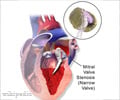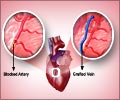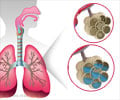- Congenital Mitral Stenosis With or Without Associated Defects - (http://circ.ahajournals.org/cgi/content/full/102/suppl_3/III-166)
- Mitral Stenosis - (http://www.emedicine.com/med/topic1486.htm)
- Hospitalization statistics for Mitral valve disease: - (http://www.wrongdiagnosis.com/m/mitral_valve_disease/stats.htm#medical_stats)
- Congenital Mitral Stenosis - (http://www.emedicine.com/ped/topic2517.htm)
- Mitral valve regurgitation - (http://www.nlm.nih.gov/medlineplus/ency/article/000176.htm)
- Heart & Vascular Institute (Miller Family) - (http://www.clevelandclinic.org/heartcenter/pub/guide/disease/valve/mvrepairfaq.htm)
Risks and Prognosis
Risks of Mitral valve replacement vary according to the patient's pre-existing problems or other associated defects. Overall
Risk of death is high in patients with pre-operative renal insufficiency, cerebrovascular disease, unstable angina and elderly patients.
In general, the complications related to surgery are as follows:
- Infection – Skin infections can be treated with proper antibiotics. Breastbone infection is a rare but serious complication. It may even result in the removal of the breastbone or death.
- Bleeding
- Blood clots because of the mechanical valve.
- Thromboembolism - Blood clots travels in the blood and occludes a different artery.
- Prosthetic Valve Infection - This is more common than infection of the native valve.
- Valve failure (less than 0.01%). Another replacement surgery is required to correct this problem.
- Heart attack during or immediately after surgery (0.004%).
- Stroke (1%)
Mitral Valve repair is preferred in most patients where replacement can be avoided. The long-term outcomes are good for both, better in mitral valve repair. However, long-term results can be influenced by other pre-existing conditions.
Studies show that ischemic heart disease with severe mitral regurgitation is associated with poor survival rates after mitral valve surgery.
Researchers have reported that death rate in patients over 75 years of age undergoing mitral valve procedures has decreased to a 5% from 27%.















Methods for Mitral Valve Repair: Annuloplasty:In annuloplasty an artificial ring is placed around the annulus of the valve.This ring reinforces the annulus and restores the valve to its normal shape and size. Balloon Valvuloplasty:Balloon valvuloplasty is performed using a catheter, i.e. a very thin flexible tube which can be inserted into the body, with a balloon at the end. The balloon is put inside the valve and is expanded thus stretching the valve and bringing it back to its normal size. For more info: heart-consult.com/articles
Various symptoms are
* Shortness of breath.
* Pulmonary edema or fluid accumulation in the lungs.
* Orthopnea or shortness of breath while lying flat.
* Paroxysmal nocturnal dyspnea or Cardiac Asthma
* Decreased exercise tolerance.
* Swollen feet or ankles.